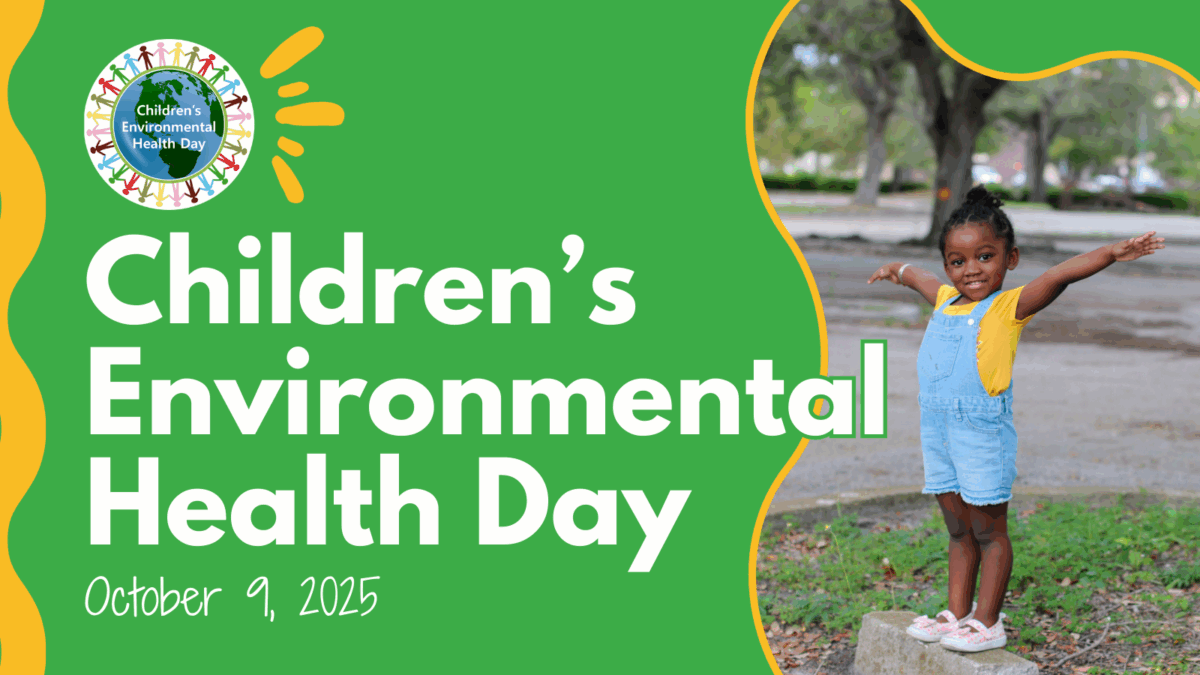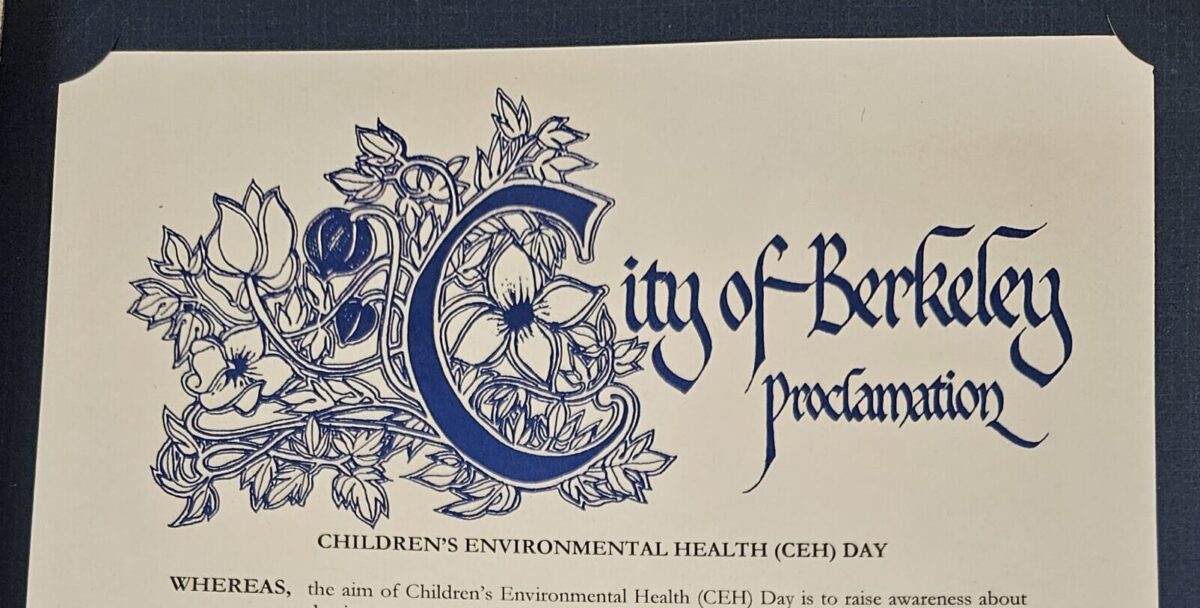Maternal Health and the Environment
By Kathy Attar, Program Manager, Eco-Healthy Child Care®
March 2022

Celebrate women this month–take action to reduce harmful environmental exposures!
Numerous environmental chemicals can harm a women’s health during and after pregnancy. A pregnant woman’s chemical exposures may also affect the baby’s health.
Maternal health refers to pregnancy, childbirth, and the postpartum period.
Environmental Pollution and Health Outcomes
Pregnant women may be exposed to harmful chemicals through contaminated air and water, consumer products, and food. Traffic-related pollution is associated with infertility, increased pregnancy loss, and hypertension in pregnancy. Exposure to pesticides has been shown to increase breast cancer risk. Chemicals that interfere with the endocrine system, such as phthalates and bisphenols often found in consumer products (e.g. plastics, fragrances) may play a role in the development of uterine fibroids.
Environmental Injustice
Health inequalities exist–Black, Latinx, and Indigenous women are more likely to be exposed to environmental pollution and harmful chemicals. These women also suffer worse outcomes. For example, Black, American Indian, and Alaska Native women in the U.S. are two to three times more likely to die from pregnancy-related causes than white women. Black women tend to develop uterine fibroids earlier in life and experience more severe symptoms than women of other races.
Take Action to Protect Maternal Health
Enroll in Eco-Healthy Child Care®’s Protecting Children’s Environmental Health e-course. The course offers easy, low-cost tips for reducing environmental hazards in child care facilities. Protect children’s health and the health of staff (who are predominately women of child-bearing age) from pesticides, lead, and harmful chemicals found in common cleaning products by eliminating exposures. The e-course is available in English and Spanish.
Work towards changing systems to reduce exposures to harmful environmental pollutants. Join Breast Cancer Action in supporting the No PFAS in Cosmetics Act. PFAS is a growing class of chemicals, which can be toxic, and may increase breast cancer risk. A recent study found that PFAS were present in just over half of the makeup products tested.
La salud materna y el medio ambiente
Celebre a las mujeres este mes: ¡tome medidas para reducir las exposiciones ambientales dañinas!
Numerosos químicos ambientales pueden dañar la salud de la mujer durante y después del embarazo. Las exposiciones químicas de una mujer embarazada también pueden afectar la salud del bebé.
La salud materna se refiere al embarazo, el parto y el periodo posparto.
Contaminación ambiental y resultados de salud
Las mujeres embarazadas pueden estar expuestas a sustancias químicas nocivas a través del aire y el agua, los productos de consumo y los alimentos contaminados. La contaminación relacionada con el tráfico se asocia con infertilidad, aumento de la pérdida de embarazo e hipertensión durante el embarazo. Se ha demostrado que la exposición a pesticidas aumenta el riesgo de cáncer de mama. Los productos químicos que interfieren con el sistema endocrino, como los ftalatos y los bisfenoles que a menudo se encuentran en los productos de consumo (p. ej., plásticos, fragancias) pueden desempeñar un papel en el desarrollo de los fibromas uterinos.
Injusticia ambiental
Existen desigualdades en la salud: las mujeres negras, latinxs e indígenas tienen más probabilidades de estar expuestas a la contaminación ambiental y los productos químicos nocivos. Estas mujeres también sufren peores resultados. Por ejemplo, las mujeres negras, indias americanas y nativas de Alaska en los EE. UU. tienen entre dos y tres veces más probabilidades de morir por causas relacionadas con el embarazo que las mujeres blancas. Las mujeres negras tienden a desarrollar fibromas uterinos a una edad más temprana y experimentan síntomas más graves que las mujeres de otras razas.
Tome medidas para proteger la salud materna
Inscríbase en el curso de Eco-Healthy Child Care® Protección de la salud ambiental de los niños. El curso ofrece consejos sencillos y de bajo costo para reducir los peligros ambientales en las instalaciones de cuidado infantil. Proteja la salud de los niños y la salud del personal (que son predominantemente mujeres en edad fértil) de los pesticidas, el plomo y los productos químicos nocivos que se encuentran en los productos de limpieza comunes eliminando las exposiciones. El curso electrónico está disponible en inglés y español.
Trabajar para cambiar los sistemas para reducir la exposición a contaminantes ambientales nocivos. Únase a Breast Cancer Action para apoyar la Ley No PFAS en Cosméticos. PFAS es una clase creciente de productos químicos que pueden ser tóxicos y pueden aumentar el riesgo de cáncer de mama. Un estudio reciente encontró que los PFAS estaban presentes en poco más de la mitad de los productos de maquillaje probados.














